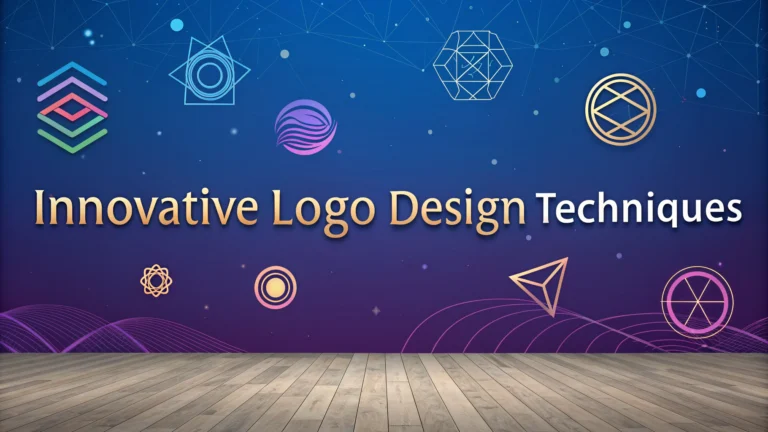Logo design combines artistic vision with strategic thinking to create memorable brand identities that leave lasting impressions.
Essential Logo Design Principles
Simple designs tend to be more memorable and versatile across different applications.
A well-designed logo should work equally well in color and black-and-white formats.
Scalability ensures your logo remains clear whether it’s on a business card or billboard.
- Use negative space creatively
- Maintain visual balance
- Consider cultural implications
- Ensure readability at all sizes
Design Process Steps
- Research the brand and competition
- Sketch initial concepts by hand
- Create digital versions
- Test across different mediums
- Refine based on feedback
Software Tools
| Tool | Best For |
|---|---|
| Adobe Illustrator | Professional vector design |
| Affinity Designer | Cost-effective alternative |
| Figma | Collaborative design work |
Color Psychology
Blue represents trust and professionalism, making it popular for corporate brands.
Red conveys energy and excitement, often used in food and entertainment logos.
Green suggests growth and sustainability, common in environmental or health brands.
Typography Tips
- Select fonts that match brand personality
- Limit yourself to maximum two typefaces
- Test legibility at different sizes
- Consider custom typography for uniqueness
Common Mistakes to Avoid
- Following trends blindly instead of focusing on timeless design
- Using too many colors or fonts
- Creating overly complex designs
- Copying other brands’ styles
Contact professional design organizations like AIGA (www.aiga.org) for additional resources and networking opportunities.
Test your logo designs with target audience groups before finalizing them.
Always provide clients with different file formats (AI, EPS, PNG, JPG) for various applications.
Versatile Applications
Modern logos must function effectively across multiple platforms and mediums:
- Social media profiles and posts
- Website headers and favicons
- Mobile app icons
- Physical merchandise
- Marketing materials
Brand Guidelines
Create comprehensive guidelines that specify:
- Minimum size requirements
- Clear space specifications
- Approved color variations
- Prohibited modifications
File Format Guidelines
| Format | Usage |
|---|---|
| Vector (AI/EPS) | Print and scalable applications |
| PNG | Digital use with transparency |
| JPG | Web and email applications |
Future-Proofing Your Design
Consider these factors for long-term logo viability:
- Adaptability to emerging platforms
- Cultural sensitivity across global markets
- Potential brand expansion
- Digital accessibility requirements
Conclusion
Successful logo design requires balancing artistic creativity with practical functionality. Focus on creating timeless designs that communicate brand values effectively while maintaining versatility across all applications. Remember to thoroughly test designs and provide comprehensive documentation for consistent implementation.
Stay current with design trends but prioritize longevity over temporary fashion. Regular evaluation and subtle refinements can help logos evolve while maintaining brand recognition.
FAQs
- What are the essential elements of an effective logo design?
A successful logo design incorporates simplicity, memorability, versatility, relevance, and timelessness. It should work in different sizes, formats, and applications while clearly representing the brand’s identity. - How important is color psychology in logo design?
Color psychology plays a crucial role in logo design as colors evoke specific emotions and associations. For example, blue suggests trust and professionalism, red conveys energy and passion, while green often represents growth and nature. - What file formats should I deliver for a logo design project?
Standard deliverables include vector files (AI, EPS, SVG), raster files (JPEG, PNG), and PDF formats. Vector files are essential for scalability, while raster files are used for digital applications and web use. - How can I ensure my logo design is unique and original?
Conduct thorough research, check trademark databases, use custom typography, avoid design trends, and create multiple iterations. Always verify your design through reverse image searches and professional databases. - What’s the difference between a logomark and a logotype?
A logomark is a symbolic or pictorial design element without text, while a logotype (or wordmark) is a text-based logo using the company name. Some logos combine both elements in what’s called a combination mark. - Why should a logo work in black and white?
A logo must be effective in black and white to ensure functionality across various applications, such as faxes, photocopies, embroidery, and single-color printing, while maintaining its recognition and impact. - How much negative space should a logo design have?
Adequate negative space is crucial for legibility and visual impact. The general rule is to maintain clear space around the logo equal to the height of a key logo element, typically the cap height of text or the height of a symbol. - What makes a logo scalable?
Scalable logos have clean lines, appropriate detail levels, and are created in vector format. They maintain clarity and recognition whether displayed on a business card or a billboard. - How can I create a responsive logo design?
Design multiple versions of the logo with varying complexity levels, from the full version to simplified versions for smaller spaces. Each version should maintain brand recognition while adapting to different contexts and sizes. - What’s the importance of typography in logo design?
Typography communicates brand personality and ensures legibility. Custom or carefully selected fonts help create distinctiveness, while proper letter spacing and modifications ensure the logo remains unique and memorable.








